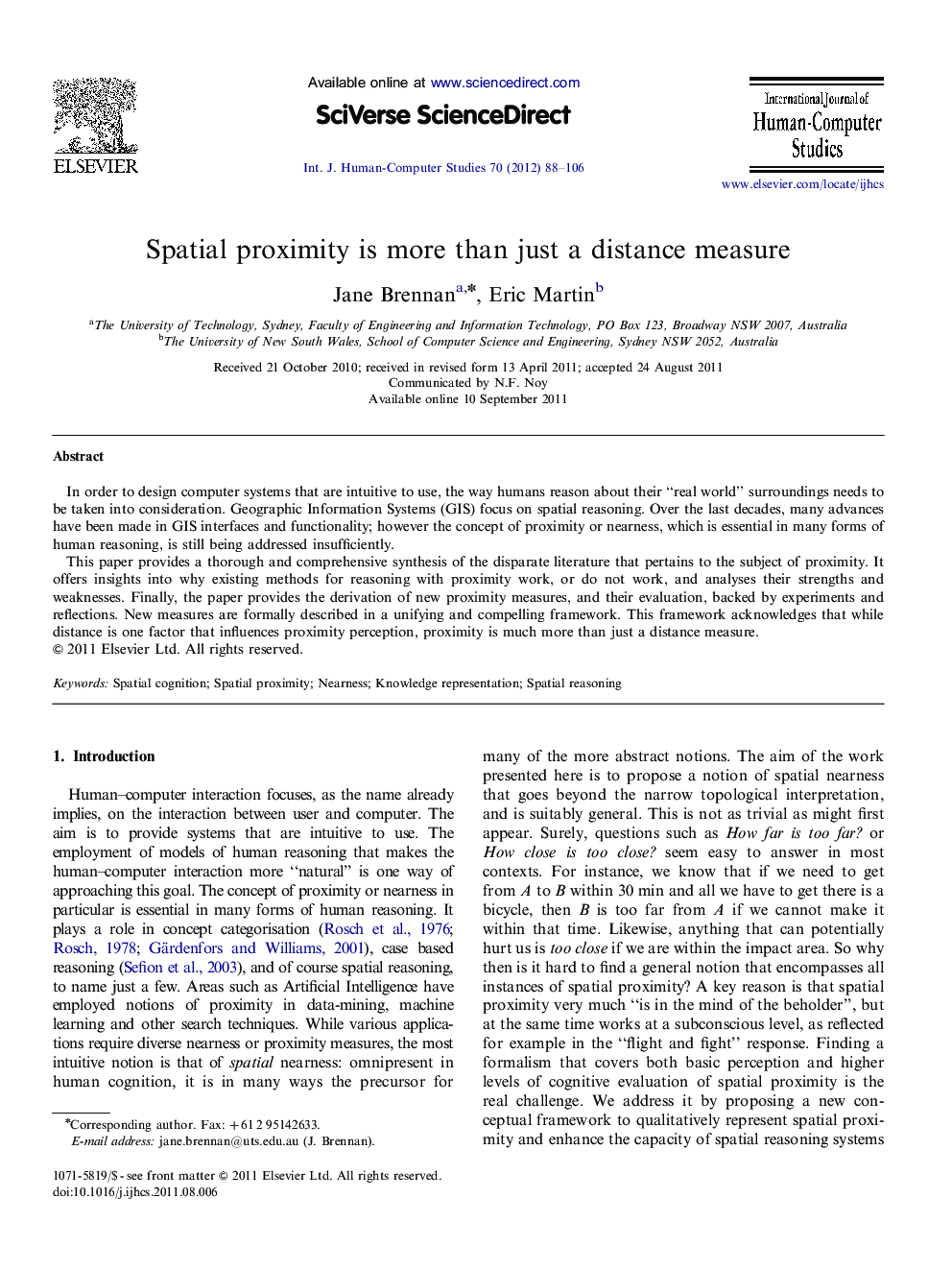| Article ID | Journal | Published Year | Pages | File Type |
|---|---|---|---|---|
| 400729 | International Journal of Human-Computer Studies | 2012 | 19 Pages |
In order to design computer systems that are intuitive to use, the way humans reason about their “real world” surroundings needs to be taken into consideration. Geographic Information Systems (GIS) focus on spatial reasoning. Over the last decades, many advances have been made in GIS interfaces and functionality; however the concept of proximity or nearness, which is essential in many forms of human reasoning, is still being addressed insufficiently.This paper provides a thorough and comprehensive synthesis of the disparate literature that pertains to the subject of proximity. It offers insights into why existing methods for reasoning with proximity work, or do not work, and analyses their strengths and weaknesses. Finally, the paper provides the derivation of new proximity measures, and their evaluation, backed by experiments and reflections. New measures are formally described in a unifying and compelling framework. This framework acknowledges that while distance is one factor that influences proximity perception, proximity is much more than just a distance measure.
► We show that proximity is context-dependent. ► Impact areas are superior to fixed distances to assess proximity. ► Impact Area Generation Model provides GIS applicability. ► Evaluation of proximity done in the context of touristic road travel.
